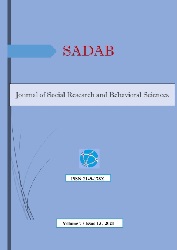Optik Disk Hipoplazili Bir Çocukta Kanada Okupasyonel Perfomans Modeli’ne Göre Ergoterapi Müdahalesinin Etkinliğinin İncelenmesi: Olgu Çalışması
An Investigation of the Efficacy of Occupational Therapy Intervention According to the Canadian Model of Occupational Performance in a Child with Optic Disc Hypoplasia: A Case Study
Author(s): Gözde Önal, Güleser Güney YilmazSubject(s): Health and medicine and law, Welfare services
Published by: SD Yayınevi
Keywords: optic disc hypoplasia; holistic view; visual perception; occupational therapy;
Summary/Abstract: Optic disc hypoplasia (ODH) is a non-progressive condition that can develop unilaterally or bilaterally, with decreased retinal nerve fiber count and normally developing retinal tissue. Decreased vision, visual field changes and defects in color vision mau be seen in individuals with ODH. A 3-year-old male pediatric case with ODH in the right eye was included in the study. The Canadian Model of Occupational Performance (CMOP) was used for the holistic evaluation of the individual, environmental and ocupational factors of the case, and the Visual Perception Reference Frame was used for the intervention application. The problem areas within the scope of CMOP were determined as difficulty in holding cutlery and therefore eating by spilling food, inability to distinguish small pictures on paper, weakness in perception of color and figure-ground, and weakness in gross motor skills (standing on one leg, jumping in place). The short-term goals in the 8-week intervention plan, development of visual discrimination (recognition, matching, classification) skills, development of color perception and figure perception, increasing the level of independence in eating with the help of auxiliary equipment (thickened cutlery); the long-term goals were determined as the development of figure-ground perception, the development of visual attention and the development of visual motor integration. With the target spesicif occupational therapy intervention program, the case was able to eat independently with the help of thickened cutlery, to be able to combine simple figures, large pieces and brightly colored puzzle pieces, to increase the time to stand on one leg, and to jump on two legs. There is a need for more evidence-based occupational therapy studies including visual perception studies in diagnoses affecting the visual field such as ODH.
Journal: Sosyal Araştırmalar ve Davranış Bilimleri
- Issue Year: 7/2021
- Issue No: 13
- Page Range: 387-399
- Page Count: 13
- Language: Turkish

